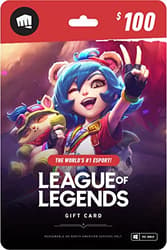
Each League of Legends Season To Date

League of Legends is a game that has become a legend, both in its genre and in the gaming industry as a whole. Every year, Riot Games introduced something new for players, making the game better and better with each new patch and season. Today, we will look back at the seasons, what changes were made in each season, and how they affected the gameplay.
Complete LoL Seasons Schedule
Season Name | Start Date | End Date |
Season One | July 13, 2010 | August 23, 2011 |
Season Two | November 29, 2011 | November 12, 2012 |
Season Three | February 1, 2013 | November 11, 2013 |
Season Four | January 10, 2014 | November 11, 2014 |
Season Five | January 21, 2015 | November 11, 2015 |
Season Six | January 20, 2016 | November 8, 2016 |
Season Seven | December 8, 2016 | November 7, 2017 |
Season Eight | January 16, 2018 | November 12, 2018 |
Season Nine | January 23, 2019 | November 19, 2019 |
Season Ten | January 10, 2020 | November 10, 2020 |
Season Eleven | January 8, 2021 | November 15, 2021 |
Season Twelve | January 7, 2022 | November 14, 2022 |
Season Thirteen | January 11, 2023 | January 9, 2024 |
Season Fourteen | January 10, 2024 | January 9, 2025 |
Season Fifteen | January 9, 2025 | January, 2026 |
What are LoL Seasons?
LoL seasons are time periods in the game that determine when a ranked cycle begins and ends. If you play ranked, you know that at the start of a new season, ranks are reset (or almost reset), and then a new race to the high divisions begins.
Each season lasts almost a year and brings significant changes. Riot usually makes drastic meta shifts, adds or reworks items, updates champions, and adjusts balance. In 2023, the developers decided to split seasons into splits so that players could receive rewards more frequently and wouldn’t be stuck in the same ranked system for too long. Thus, the League ranked season start is not exactly a highly anticipated event for players who are tired of their rank for one reason or another.
From 2025 onward, everything changed even more. Now the year will be divided into three splits, each carrying a new seasonal theme. Each split will consist of two acts and bring unique changes to the game, such as new champions, game modes, and events.
What Season is it in LoL?

The current League season is Season 15, and this year, Riot Games has completely changed the season system. Previously, there was one season per year with small splits, but now the year still consists of a single season, which is divided into three thematic splits. Each split lasts approximately 16 weeks and includes two acts, bringing changes to the game, such as new champions, game modes, and events.
The first part of the incredible 2025 season is entirely dedicated to Noxus, and Riot has done an excellent job integrating this theme, reworking everything from the map to the characters. The Arena mode has returned to the game, but now it takes place in the Reckoning Pits of Noxus—a brutal battleground where only the bravest warriors fight. Along with this, a new ranked system, Fame, has been introduced, allowing players to earn recognition for participating in battles. If Arena was just a fun mode before, it now has its own progression system that players will want to grind.
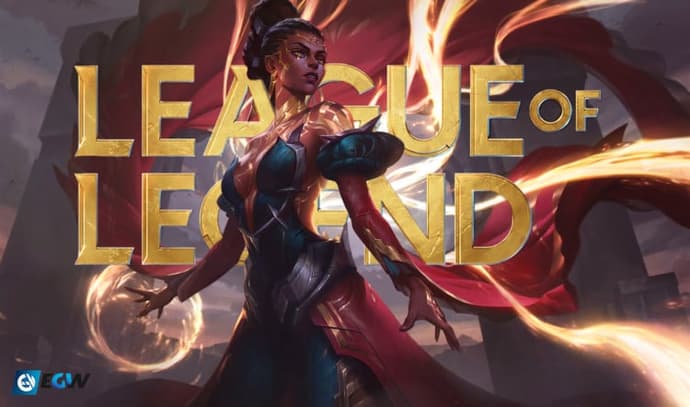
But the true star of the season is, of course, Mel. Fans have been waiting for her ever since Arcane was released, and now she has finally made her way into the game. Moreover, Mel brings a completely new mechanic that has never been in the game before—projectile reflection. If you haven’t had the chance to play Mel yet, I recommend checking out the Mel Medarda Skills Overview first. She can be unlocked through seasonal missions, so fans of the series will definitely have something to dive into.
When does the new LoL season come out?
When does the new League season start? We have the answer to this question. The next LoL season will only begin in 2026, as the 2025 season follows a new system—now the year is divided into three thematic splits, but the season itself remains unified and lasts the entire year.
Riot hasn’t revealed all the details about the next split yet, but according to leaks, its theme might be drastically different from the current one. Rumors suggest that we might get either Bandle City with its chaotic Yordles or Bilgewater with pirate skirmishes.
Now, there’s no need to wait an entire year to experience something new. Each split lasts about 16 weeks and brings unique changes to the game. If the current theme doesn’t appeal to you—just wait a little, and everything will change again soon.
Key Features for Each LoL Season
Every time a League of Legends season start happens, it brings not only a bunch of updates, fixes, and other changes. Each season also has its own unique theme, exclusive skins, map changes, and various events. By participating in these events, players can earn valuable rewards that are only available during that season.
Season 1
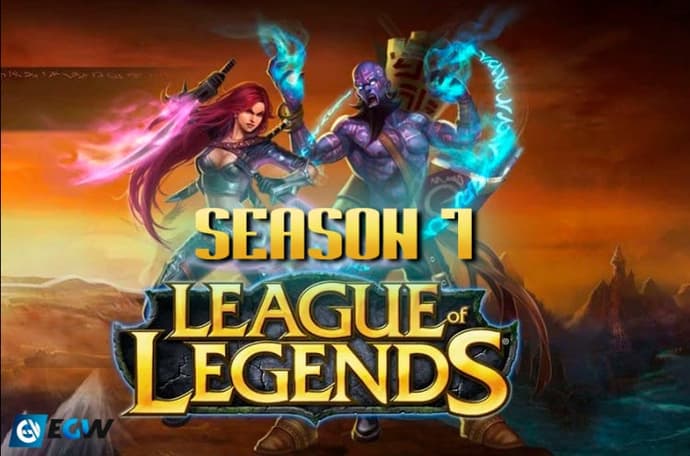
Season 1 in League of Legends was the time when the game first started becoming what we know today. Before that, there was only a beta test, but in 2010, Riot launched the first official ranked season, introducing a ranking system, the fight for ranks, and the formation of the first serious meta.
One of the biggest changes was the introduction of the Elo system, which determined how skilled players were. Back then, there were no familiar divisions like Gold or Platinum; instead, a numerical rating system was used. This was the period when the first high-level players emerged, many of whom would later become esports stars.
But perhaps the most important event of the season was the first-ever League of Legends World Championship. It took place in the summer of 2011 at DreamHack Summer, and Fnatic won, becoming the first official LoL champion team. The tournament attracted a huge audience and proved that the game had the potential to become a full-fledged esports discipline.
Season 1 was the true beginning of League of Legends as a competitive game. There were no complex mechanics yet, the balance was chaotic, and the game itself looked completely different—but this season marked the start of a story that continues to this day.
Season 2

Season 2 in League of Legends was a historically significant moment—it was the time when the game truly started evolving into a full-fledged esports discipline. Riot Games updated the ranking system, improving the old Elo system and laying the foundation for the League System, which later transformed into the familiar divisions.
This season also solidified the meta—a clear structure of lanes and roles emerged. The jungler became a full-fledged position, and jungle items were introduced to make farming easier. Before this, teams could play without a dedicated jungler, but with Season 2, it became an essential part of team strategy.
The season's climax was the World Championship, which was held for the first time in a massive arena in Los Angeles. The prize pool increased to $2 million, and Taipei Assassins emerged as champions, defeating Azubu Frost. This season not only strengthened League of Legends as an esport but also demonstrated that it was no longer just a game—it had become an entire industry.
Season 3

Season 3 in League of Legends was the moment when the game took on its familiar structure. Riot Games completely overhauled the ranking system, replacing the old Elo system with the new League System. Instead of raw numerical values, the familiar divisions were introduced: Bronze, Silver, Gold, Platinum, Diamond, and Challenger. Now, players could clearly track their progress, and the promotion system became much more transparent.
Balance also reached a new level. Riot started monitoring the meta more carefully, adjusting the balance with the professional scene in mind. This was the season when the first well-defined strategies emerged, and macro play and team decision-making became more important than just individual mechanics.
But the biggest event of Season 3 was the 2013 World Championship. The grand final was held at Staples Center in Los Angeles and was watched by hundreds of thousands of viewers. SK Telecom T1 became the champions, and their young midlaner Faker made his mark as a future legend. This was the season when League of Legends firmly established itself as the biggest esports title in the world.
Season 4

Season 4 in League of Legends was a season that significantly changed the game both strategically and mechanically. It started on January 10, 2014, and ended on November 11, 2014, during which eight new champions were added, bringing the total champion count to 123.
One of the biggest changes was the jungle rework. Riot made jungle camps harder, increased their damage, and introduced new hunter items, allowing junglers to clear camps faster and gain bonuses based on their playstyle. Now, junglers weren’t just there for ganks—they could actually control the map, accelerate the game’s pace, or play a more defensive strategy.
The gold balance was also adjusted. Previously, kills could snowball out of control too quickly, but in Season 4, Riot made the bounty system fairer. Even if a team fell behind, they had more chances to stage a comeback through smart decision-making rather than losing outright due to early mistakes.
The season’s climax was the 2014 World Championship, which was held in South Korea for the first time. Riot organized a massive event, with the grand final taking place at Sangam Stadium, the venue of the 2002 FIFA World Cup final. Samsung White dominated the tournament and claimed victory, leaving almost no chances for their opponents.
Season 5
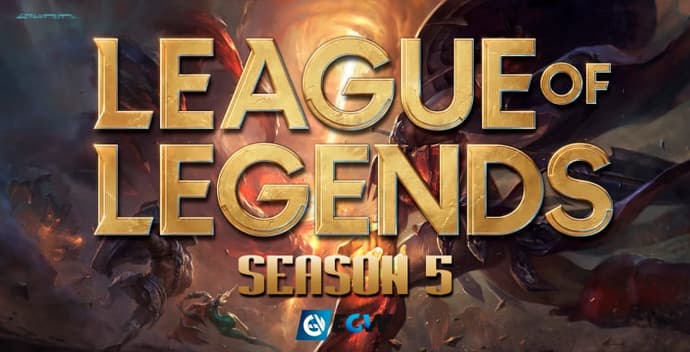
Season 5 in League of Legends was one of the most transformative seasons, completely reshaping the game. It started on January 21, 2015, and ended on November 11, 2015. By this time, the champion roster had grown to 130, with seven new champions introduced throughout the season. Riot Games revamped the jungle system, added a new objective—the Rift Scuttler, reworked dragon mechanics, and adjusted the gold balance.
The biggest change of the season was the introduction of the Rift Scuttler. This neutral monster didn’t fight back but provided vision control over the river, creating temporary vision and a movement speed boost for allies. This addition made river control a key strategic element, helping teams track enemy movements and plan engagements more effectively.
Additionally, dragons are now granted stacking buffs. Previously, slaying a dragon only provided gold, but in Season 5, each dragon kill granted unique bonuses, which grew stronger with multiple kills. This change increased the importance of objective control, forcing teams to prioritize fights around these key areas. Baron Nashor also received buff enhancements, allowing teams to push lanes more efficiently and empowering minions with additional strength.
No new ranked divisions were introduced, but Riot began experimenting with dynamic matchmaking. The idea of ranked team games was also discussed during this period, though it was finalized in later seasons.
The season concluded with the 2015 World Championship, which took place in Europe. The grand final was held at Mercedes-Benz Arena in Berlin, where SK Telecom T1 secured their second World Championship title. This was the season when Faker cemented his status as the greatest League of Legends legend.
Season 6
Season 6 in League of Legends continued the large-scale changes introduced in the previous season. It started on January 20, 2016, and ended on November 8, 2016. By this time, the game had 134 champions, with four new champions added during the season. Riot Games made significant changes to masteries, reworked the jungle, introduced the first version of dynamic queue, and increased the impact of dragons.
One of the biggest changes was the new mastery system. Instead of a complex tree-like structure, players could now choose from three main paths, with the biggest addition being Keystone Masteries, which provided powerful bonuses. This significantly influenced champion strategies and playstyles.
The jungle underwent another rework. Riot introduced four elemental dragons—Infernal, Ocean, Mountain, and Cloud, which spawned randomly. Now, killing a dragon granted strategic advantages depending on its type rather than just gold. This made dragon control a critical part of the game. Additionally, the Elder Dragon was introduced, providing a temporary but powerful buff in the late game.
The ranked system saw a controversial experiment with dynamic queue. Riot attempted to replace solo and team-ranked games with a single system where players could queue in groups of one to five. However, the idea faced heavy criticism, as solo players often ended up against premade teams, making matches unbalanced. Eventually, Riot removed the system and brought back the familiar Solo/Duo queue.
The season’s grand finale was the 2016 World Championship, held in the United States. Riot made the event even more spectacular, with the finals taking place at Staples Center in Los Angeles. SK Telecom T1 won their third World Championship title, solidifying their dominance in the pro scene.
Season 6 was a season of experiments and major changes. The new mastery system, elemental dragons, and the attempt to overhaul ranked play made the game deeper, though not all innovations were well received. Riot learned valuable lessons, and LoL continued to evolve, preparing for even bigger transformations in the future.
Season 7
Season 7 in League of Legends was a season that laid the groundwork for future changes to the rune system and the game's economy. It started on December 8, 2016, and ended on November 7, 2017. By this time, the game had 139 champions, with five new champions added throughout the season. Riot Games updated the jungle, reworked support items, introduced support quests, and began preparing for a complete rune system overhaul.
One of the biggest changes was the jungle update. Red and Blue Buffs now lasted longer after being handed off to an ally, and jungle camp experience became more evenly distributed. This made junglers more flexible in their pathing and reduced reliance on early ganks.
Another major addition was the support item rework. All support items now had quests that granted bonuses for completing specific objectives. This allowed supports to earn more gold and have a greater impact on the game, even without kills or significant farm.
Additionally, in Season 7, Riot began preparing for a new rune system. By the end of the season, they completely removed the old rune and mastery system, announcing its replacement with Rune Reforged. This was one of the biggest changes in years, though it was officially implemented in the following season.
The season concluded with the 2017 World Championship, which took place in China. The grand final was held at the Beijing National Stadium (Bird’s Nest), where Samsung Galaxy defeated SK Telecom T1 3-0, marking the first time Faker lost a Worlds final—a shocking moment in LoL esports history.
Season 7 was the final season before massive changes. Riot began reshaping the game for a new era, reworking runes and increasing the impact of supports. It was a transitional season that set the stage for the biggest transformations in League of Legends history.
Season 8
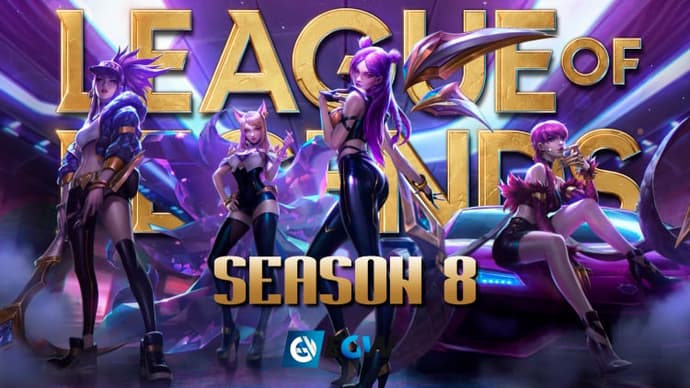
Season 8 in League of Legends was one of the most transformative seasons, completely overhauling the rune and mastery system. It started on January 16, 2018, and ended on November 12, 2018. By this time, the game had 144 champions, with five new champions introduced throughout the season. Riot Games fully revamped the rune system, reworked the Summoner’s Rift map, and changed the ranked system.
The biggest change was the introduction of Rune Reforged—a new rune system that completely replaced the old mechanics. Players could now choose a primary path (Domination, Precision, Sorcery, Resolve, Inspiration) and a secondary path, gaining powerful bonuses. This removed the need to buy runes with Blue Essence and made champion customization much more flexible.
The ranked system also introduced ranked splits. The season was now divided into three stages, allowing players to earn rewards for each split. This encouraged more consistent play and provided new goals throughout the year.
The season concluded with the 2018 World Championship, held in South Korea. The grand final took place at Incheon Munhak Stadium, where Invictus Gaming defeated Fnatic 3-0, becoming the first Chinese team to win a World Championship title.
Season 8 was a game-changing season for League of Legends. The new rune system, updated map, and ranked splits made the game more dynamic and gave players more ways to progress. LoL entered a new era, where champion customization became a core strategic element.
Season 9
Season 9 in League of Legends continued large-scale changes, making the game more dynamic and balanced. It started on January 23, 2019, and ended on November 19, 2019. By this time, the game had 148 champions, with four new champions introduced during the season. Riot Games reworked the ranked system, introduced the Grandmaster rank, adjusted ranked splits, and updated support mechanics.
The biggest change was the ranked system update. Riot added the Grandmaster rank, positioned between Master and Challenger, making high-level progression smoother and more precise. Ranked splits were also improved, allowing players to earn more rewards for active participation throughout the season.
Supports received an item overhaul—Riot reworked starter support items, making them less dependent on minion last-hitting. Instead, they granted gold for assisting allies, making it easier for supports who struggled with farming.
The season concluded with the 2019 World Championship, held in Europe. The grand final took place at AccorHotels Arena in Paris, where FunPlus Phoenix dominated G2 Esports with a 3-0 victory, securing China’s second World Championship title.
Season 9 strengthened the ranked system and made support gameplay more accessible. The addition of Grandmaster, improved ranked splits, and item balance changes made the game more competitive and player-friendly. It was a stable season, setting the stage for future global changes in LoL.
Season 10
Season 10 in League of Legends was a season that drastically changed dragon mechanics, introducing Dragon Souls and making them a key strategic element. It started on January 10, 2020, and ended on November 10, 2020. By this time, the game had 153 champions, with five new champions added during the season. Riot Games also updated the jungle system and reworked the gold balance.
The main innovation was the introduction of Dragon Souls. Now, the team that secured the fourth dragon received a powerful permanent buff for the entire game. Each type of dragon provided unique bonuses: Infernal increased damage, Ocean restored health, Mountain strengthened defenses, and Cloud accelerated ability cooldowns. This made dragon control critically important, as winning the fight for the Dragon Soul could determine the match's outcome.
Changes also affected the gold balance. Riot adjusted kill and assist rewards to reduce snowballing. Now, losing teams had more opportunities for a comeback, and gold differences no longer decided games as quickly as before.
The season concluded with the 2020 World Championship, which took place in Shanghai. The final was held on October 31, 2020, at Pudong Football Stadium, and DAMWON Gaming became the champions, defeating Suning 3-1. This tournament marked the return of the title to South Korea after two years of Chinese dominance.
Season 10 completely changed the approach to macro play. Dragon Souls made map control and timing even more crucial, while balance changes allowed for more frequent comebacks. LoL continued to evolve, introducing new mechanics that strengthened the tactical aspect of the game.
Season 11
Season 11 in League of Legends was a season that radically changed the item system with the introduction of Mythic Items. It started on January 8, 2021, and ended on November 15, 2021. By this time, the game had 157 champions, with four new champions added during the season. Riot Games completely redesigned the item shop, introduced the Mythic Item system, and reworked the gold balance.
The biggest change of the season was the introduction of Mythic Items. These were powerful artifacts, with each champion allowed to choose only one per game. They became the foundation of builds, drastically altering champion power balance. Players now had to carefully decide which Mythic Item suited their playstyle and adapt based on the situation.
The item shop was also overhauled. Riot updated the interface, made recommended builds clearer, and introduced an automatic item suggestion system. This helped new players understand builds more easily, while experienced players gained more tools for fine-tuning their itemization.
Changes also affected the gold balance. Riot adjusted item prices and kill rewards to reduce early-game snowballing. Losing teams now had better comeback opportunities, and gold distribution became more balanced.
The season concluded with the 2021 World Championship, which took place in Iceland. The final was held at Laugardalshöll Arena, where Edward Gaming defeated DWG KIA 3-2. This was one of the most intense finals in history, as EDG managed to break South Korea’s dominance, bringing the World Championship title back to China for the first time in years.
Season 12
Season 12 in League of Legends was a season where Riot Games focused on changes to the jungle, dragon system, and teleport mechanics. It started on January 7, 2022, and ended on November 14, 2022. By this time, the game had 162 champions, with five new champions introduced throughout the season. Riot Games reworked dragons, adjusted jungle balance, and changed the mechanics of Summoner Spell: Teleport.
The biggest change of the season was the updated dragons and their impact on the game. Riot introduced Hextech Drake and Chemtech Drake, each with unique effects. Hextech Drake applied slow effects to auto-attacks and abilities, while its Dragon Soul allowed teams to teleport using portals across the map. Chemtech Drake was temporarily removed mid-season due to balance issues but was later reworked and reintroduced with a new effect.
The jungle also underwent changes. Experience and gold from camps were adjusted to reduce the gap between aggressive and farming junglers. Now, even junglers who didn’t focus on ganking could still provide value to their team, increasing the viability of more diverse champion picks in this role.
One of the most controversial changes of the season was the update to Summoner Spell: Teleport. Until the 14-minute mark, it could only be used on turrets, reducing early bot-lane teleports and making the early game more stable.
The season concluded with the 2022 World Championship, held in North America. The grand final took place at Chase Center in San Francisco, where DRX defeated T1 3-2. This was one of the most dramatic tournaments in history, as DRX made a Cinderella run from the Play-In stage to the championship, and Deft, their leader, finally won a Worlds title after years of attempts.
Season 13
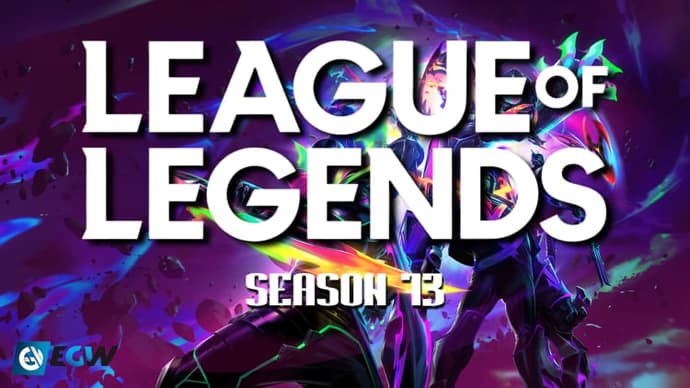
Season 13 in League of Legends was a season where Riot Games focused on a jungle rework, changes to the ranked system, and the return of Chemtech Drake. It started on January 11, 2023, and ended on January 9, 2024. By this time, the game had 165 champions, with three new champions introduced throughout the season. Riot Games adjusted the ranked mechanics, made jungle adjustments, and reintroduced Chemtech Drake with a new mechanic.
The biggest change of the season was the ranked system rework. For the first time, the season was split into two splits, with rank resets mid-year. This meant that players could climb the ladder twice per season and earn additional rewards.
The jungle also saw major changes. Riot introduced jungle companions, which helped clear camps and provided bonuses for killing jungle monsters. Each jungler had their own "pet", which could deal damage, provide shields, or boost movement speed. This change made jungle gameplay smoother and added new strategic possibilities.
One of the most anticipated changes was the return of Chemtech Drake. After being removed in 2022, Riot reworked its mechanics. Now, it reduced incoming damage when at low health, and its Dragon Soul increased crowd control resistance. This made it more balanced and useful for teams that relied on extended fights.
The season concluded with the 2023 World Championship, held in South Korea. The grand final took place at Gocheok Sky Dome in Seoul, where T1 defeated Weibo Gaming 3-0. For Faker, this marked his fourth Worlds title, cementing his status as the greatest player in LoL history.
Season 14

Season 14 in League of Legends was marked by significant changes aimed at improving the player experience and celebrating the game’s 15th anniversary. The season started on January 10, 2024, and ended in December 2024. By this time, the game had 167 champions, with two new champions introduced during the season. Riot Games made changes to the ranked system, reworked the item system, and hosted a major anniversary event.
The biggest change of the season was the ranked system overhaul. For the first time, the season was split into three splits, with rank resets in January, May, and September 2024. This update allowed players to restart their climb three times per season, making the ranked experience more dynamic and engaging. The goal was to reduce the length of ranked progression and provide more opportunities for high-level achievements.
The item system also underwent major adjustments. Riot Games removed Mythic Items, which had been introduced in 2021, as they limited build diversity and strategic flexibility. Instead, a more adaptable system was brought back, allowing players to experiment with different item paths, increasing strategic depth and variety in the game.
To celebrate 15 years of League of Legends, Riot hosted the "Player Days" event, which began on October 9, 2024. Over ten days, players could earn various rewards, including the Mythic "Anniversary Sivir" skin, Mythic Essence, and themed accessories. Each day featured a new challenge, rewarding players with exclusive prizes. Additionally, special developer livestreams were held, showcasing community creations, music, and esports, allowing players to fully immerse themselves in the anniversary celebration.
The season concluded with the 2024 World Championship, held in Europe. The grand final took place on November 2, 2024, at The O2 Arena in London, where T1 defeated Bilibili Gaming 3-2. This tournament was historic, as Faker won his fifth Worlds title, further cementing his status as the greatest player in League of Legends history. The final broke records, attracting 6.9 million peak concurrent viewers, making it the most-watched event in esports history.
How long is the LoL season?
Previously, Riot Games followed a traditional system for LoL seasons, with a single ranked season per year. Players would start their climb in January, progress through the divisions, and by November, the season would end, leading into the preseason, where new mechanics were tested. This format was convenient but had its downsides—players had to wait a long time for rank resets, and motivation often declined toward the end of the season.
In Season 13, Riot Games experimented by splitting the year into two splits. This meant that ranked progress was reset twice per season, giving players another chance to compete for high ranks and rewards. This approach helped maintain engagement, but the developers saw potential to take it even further.
Now, in Season 15, the system has become more structured—the year is divided into three thematic seasons, each lasting about 16 weeks and consisting of two acts. A new split starts every four months, but rank resets now happen only once a year—in January. This allows players to earn rewards and experience changes more frequently while maintaining their rank progress throughout the year.
Instead of one long season with small splits, the year is now divided into three major periods with different themes, events, and mechanics. This format makes ranked play less exhausting and provides more opportunities for improvement. If the current split doesn’t suit you—the next one will start soon.

Kirill is a writer of articles and blogs at eGamersWorld, having joined the team in 2024. His primary focus is analytics and crafting content about esports. With years of experience in gaming, Kirill brings deep industry insights to deliver high-quality and engaging materials.
 CS2 Schedule 2026 – Season Overview & Key TournamentsComplete CS2 2026 season overview with detailed structure, key tournaments, Majors, and Tier-1 events. Learn how the CS2 competitive calendar is built throughout the year.
CS2 Schedule 2026 – Season Overview & Key TournamentsComplete CS2 2026 season overview with detailed structure, key tournaments, Majors, and Tier-1 events. Learn how the CS2 competitive calendar is built throughout the year. When does the New League of Legends season Start?League of Legends Season 16 starts Jan 8! Explore the Demacia lore, new role quest mechanics, split-push buffs, and rumors of Lux’s mother, Augatha, joining the Rift. Stay updated for 2026.
When does the New League of Legends season Start?League of Legends Season 16 starts Jan 8! Explore the Demacia lore, new role quest mechanics, split-push buffs, and rumors of Lux’s mother, Augatha, joining the Rift. Stay updated for 2026.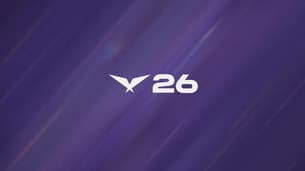 LCK Cup 2026 Viewer Guide: Dates, Schedule, Format, ParticipantsFull guide to LCK Cup 2026: tournament format, group stage details, and official schedule. Check updated rosters for T1, Gen.G, HLE and other teams competing for First Stand slots.
LCK Cup 2026 Viewer Guide: Dates, Schedule, Format, ParticipantsFull guide to LCK Cup 2026: tournament format, group stage details, and official schedule. Check updated rosters for T1, Gen.G, HLE and other teams competing for First Stand slots. Resident Evil Requiem: Release Date, Editions, GameplayExplore Resident Evil 9 (Requiem) editions, prices, and platforms. Pre-order details, Raccoon City lore, and new gameplay features for PC, PS5, Xbox, and Switch 2.
Resident Evil Requiem: Release Date, Editions, GameplayExplore Resident Evil 9 (Requiem) editions, prices, and platforms. Pre-order details, Raccoon City lore, and new gameplay features for PC, PS5, Xbox, and Switch 2.

